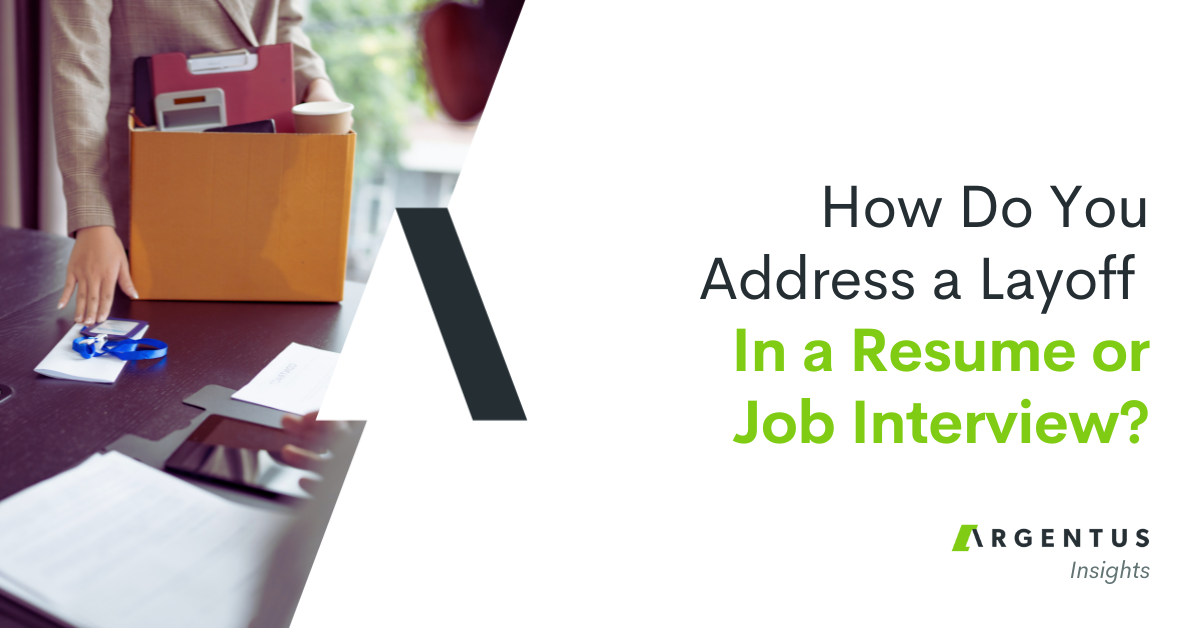Most people have taken some sort of break in their careers. But a gap on your resume can send hiring managers running in the other direction. On today’s Argentus Blog, we’re discussing how career breaks are becoming more accepted—and offering advice for candidates about how to position these gaps on your resume.
For a long time, having a significant gap in your employment history has been seen as a big red flag. If a recruiter or hiring manager opens up a resume—or a LinkedIn profile—and sees multiple years without employment, many run in the other direction.
It’s easy to see why. Having a big gap in your employment history creates a whole host of questions in the reader’s mind: has this candidate struggled to find a job because of some issue with their performance? Have they not been motivated in their career? If they were out of the market for a long time, did their skills atrophy?
These questions don’t inspire confidence, and it’s easiest for a hiring manager or recruiter to simply go to the next resume in their file. Like it or not, having a big gap on your resume—or multiple gaps—has been a stigma.
But in 2024, the world of work has changed. In the tight labour market leading up to the pandemic, employers began focusing more on work/life balance as a form of employee attraction and retention. The pandemic arrived and blew those doors wide open. Companies and employees overall became more open about accommodations for life outside the workplace, recognizing that while careers are important, they are just one aspect of life.
Yet a gap on a resume is still a gap. But there are all kinds of reasons why people have gaps in their resumes. Maybe you needed to take time to care for an ailing family member. Maybe you took time to pursue higher education—an MBA, Master’s Degree or designation. Maybe you’ve taken on consulting or volunteer work, or taken time to teach a course. Maybe you’ve taken a true career break and taken a few months to rest, recharge, and reorient your thinking towards what you want to do next in your career.
In 2022, LinkedIn ran a survey of 23,000 workers and found that 62% of employees had taken a career break, and 35% would be interested in taking one in the future. That same year, LinkedIn took the step of creating the option to add a formal “Career Break” to your LinkedIn profile—fitting into your employment timeline alongside the roles that you’ve worked. That option helps people fill in the gap that would otherwise be sticking out like a sore thumb by acknowledging that yes, people do sometimes take career breaks, and yes, it’s normal.
Career breaks may not actually be more common than they used to be, but people are definitely more open about them than they used to be. And why shouldn’t they be? A progressive, accomplishment-filled career can include breaks for all sorts of reasons that won’t impact future performance. Many of these reasons to take a break might, in fact, help a candidate perform better future roles by avoiding burnout, improving their skills, and allowing space for new ideas and perspectives.
So yes, we believe that career breaks should be normalized. But when thinking about how to talk about breaks when you pitch yourself as a candidate, either on LinkedIn or within a resume, there are a few things to consider.
Here’s our advice:
The golden rule for having gaps in your resume is this: you don’t want to create any doubt or questions. Transparency is key—within reason, as there are certain personal matters that are confidential and needn’t be spelled out on a resume. If the reason is highly personal, just putting an entry for “career break” during that time will suffice.
But if you have a gap in your employment, it can be helpful to explain why. Resumes (and LinkedIn profiles) tell a story, and gaps can be part of that story. It’s your opportunity to take charge of the narrative that a hiring manager is forming about your career history—instead of letting their imagination run wild.
If you have a gap on your resume say in 2019, instead of leaving it hanging out there, create a section for 2019 explaining what you were doing. Don’t include too many personal details—this is a professional document after all—but if you undertook career development during this time, mention it. If you took time to rest and recharge, it doesn’t hurt to explain how this time informed your future career choices, plans or goals, if it did.
If a gap was only for a few weeks, or even a month or two, don’t mention it. Hiring managers recognize that it can take time to secure a new role. But if a gap is 3 months or larger, that’s when it starts to raise questions. It’s better to pre-empt those questions where you can, instead of waiting to clear them up in an interview that may never arrive.
We’re all human, and every human has more going on than their career. In many cases, that can actually be an asset when you tell your career story.
We hope you found today’s Argentus blog informative and useful! And as always, if you have any immediate or upcoming hiring needs in Supply Chain Management, Procurement or their related areas, please reach out to recruit@argentus.com.




0 Comments